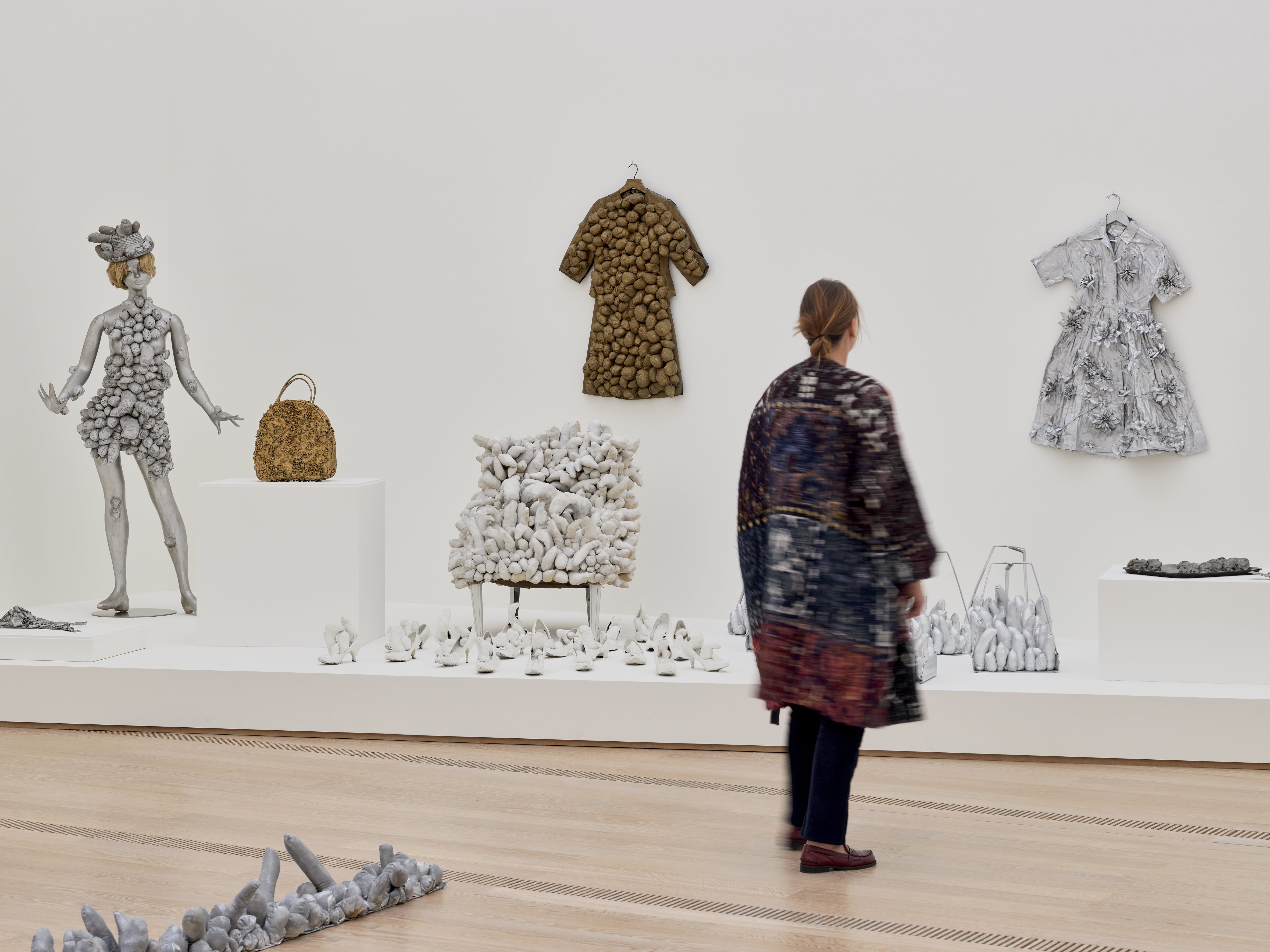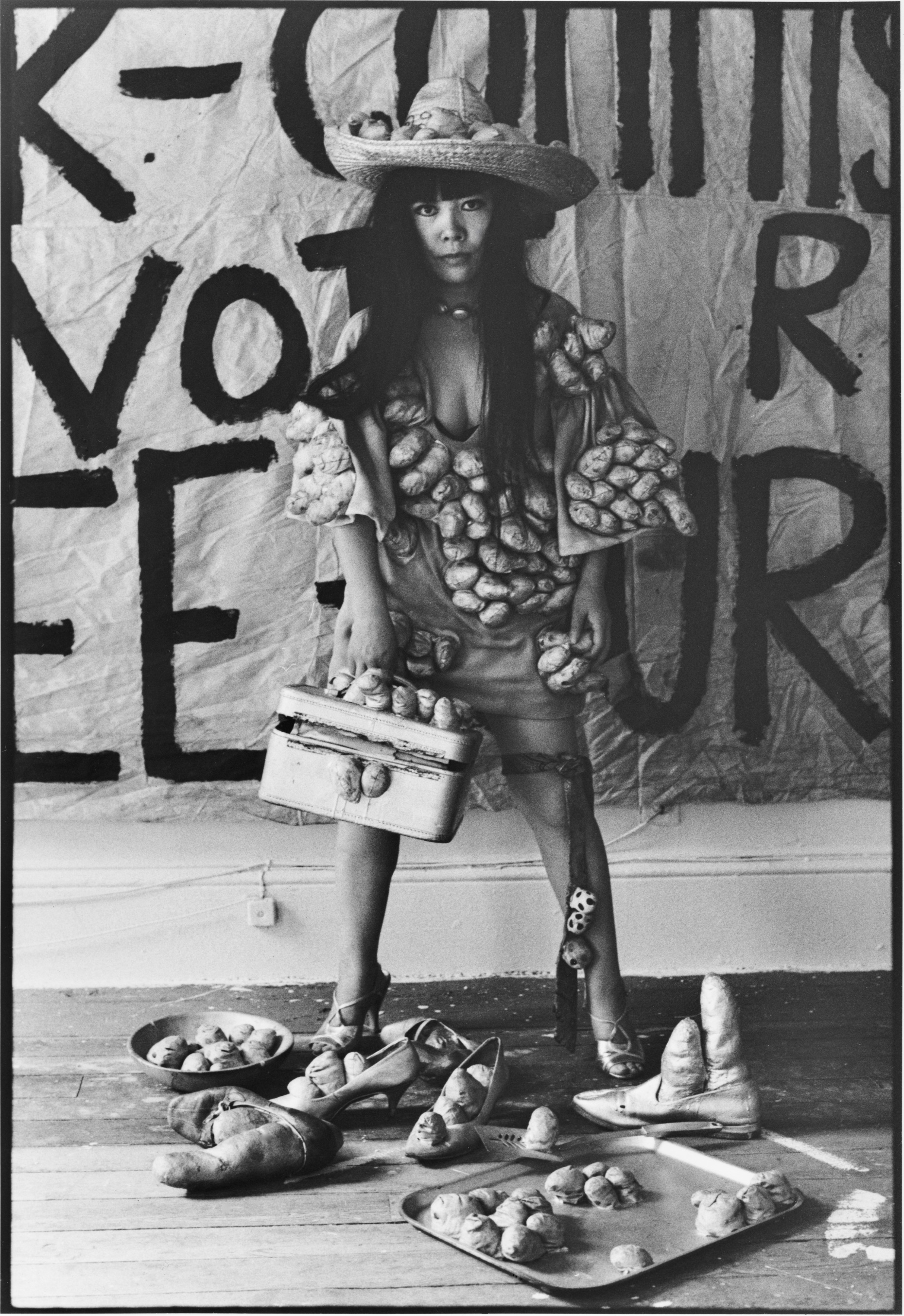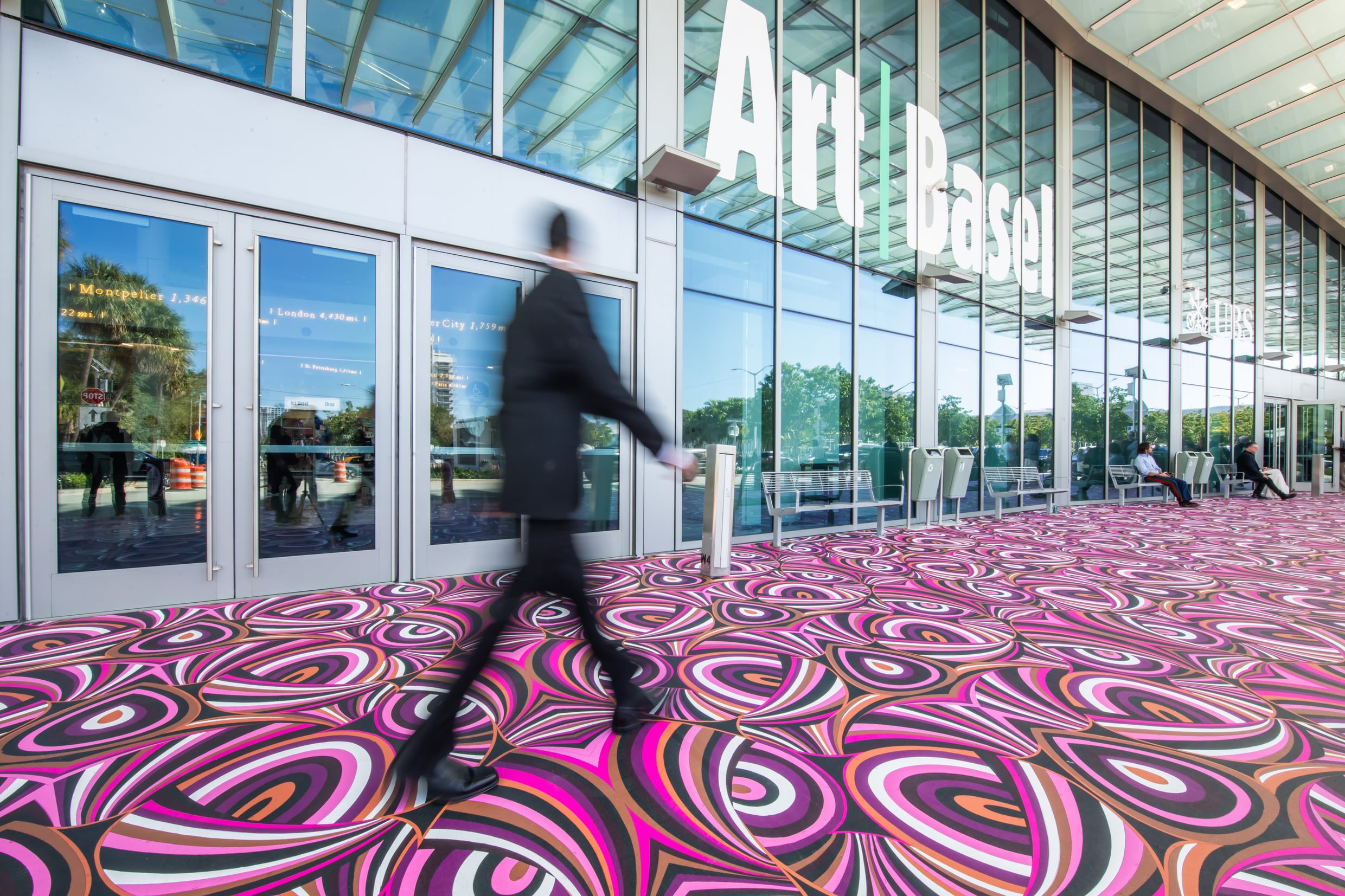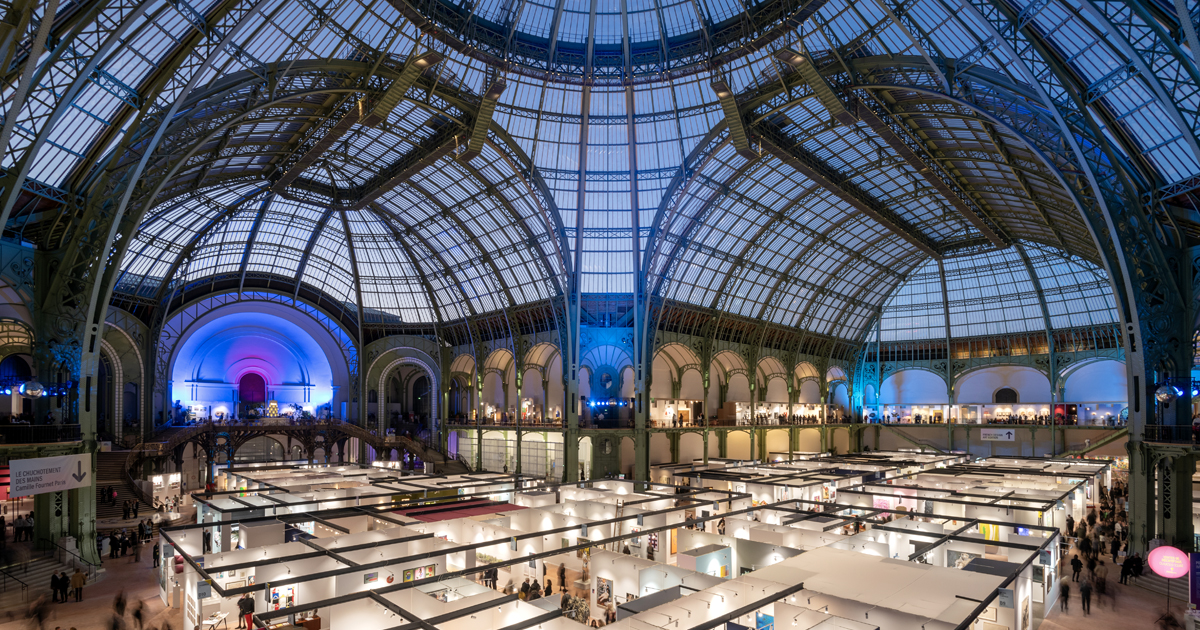Máret Ánne Sara’s Goavve-Geabbil transforms Tate Modern into a living landscape of hides, bone, sound, and spirit. Rooted in Sámi cosmology, the installation marks a powerful return of shamanic presence in contemporary art—an immersive call to reconnect with land, ancestors, and the unseen.
Yayoi Kusama: Infinity Unfolded at Fondation Beyeler
From 12 October 2025 to 25 January 2026, Basel’s Fondation Beyeler goes full dot-mad with the first-ever Swiss solo exhibition of Yayoi Kusama. Spanning over 70 years of her prolific career, the show brings together 300+ works — from intimate 1950s watercolours to new, immersive Infinity Mirror Rooms created just for this occasion. Wander through hypnotic nets, mirrored environments, and dazzling sculptures as Kusama turns the museum (and its garden) into a universe of repetition, reflection, and sheer spectacle. Prepare to see yourself multiplied… infinitely.

From 12 October 2025 to 25 January 2026, the Fondation Beyeler in Riehen/Basel offers exactly that: Yayoi Kusama, in a first-ever solo presentation in Switzerland, and in a mood to rewrite the rulebook on what a retrospective can do.
This is not a polite career overview. The exhibition — developed in close collaboration with the artist and her studio — brings together more than 300 works from lenders across the globe and spans over seven decades, mapping a practice that refuses to be tidy. Expect intimate watercolours from the 1950s to monumental, newly produced environments that fold visitors into infinity itself. It’s a survey that reads less like a museum checklist and more like a compulsive, expansive manifesto on repetition, obsession, and the aesthetics of total immersion.
The show opens with rare early paintings and watercolours made in Kusama’s hometown during the early 1950s — small, exacting works that quietly register the obsessions to come. From there, the narrative arcs outward: the artist’s move to New York in the late 1950s and her active participation in the 1960s avant-garde are staged as part of a larger story about an artist constantly in motion, willingly shifting media and scale. Returning to Japan in the 1970s, Kusama continued to invent and reframe her practice in ways that remain resonant today. Over 70 years of production, the exhibition insists, is not a chronological trophy case but an ongoing conversation.

© YAYOI KUSAMA
Photo: Mark Niedermann
One of the show’s strengths is its refusal to flatten Kusama to a single motif. Yes, the polka dot is ubiquitous — but it functions within a broader grammar that includes nets, mirrors, sculptures, performance, fashion, writing and film. The dots and nets are formal drivers but also, in the words of the exhibition, conduits of a lived idea: infinity. Not a marketing tagline, but a recurring spiritual and psychological stance that animates the entire programme.
Kusama’s work is not primarily about viewing from a safe distance. It insists on entry. Her Infinity Mirror Rooms — and the exhibition includes a brand-new Infinity Mirrored Room produced for this presentation — invert the spectator/object relationship. Mirrors multiply the visitor into an array of reflections and light; repetition becomes a spatial condition rather than merely a painterly tactic. The Fondation Beyeler installation spreads that approach across galleries and into the grounds, promising that the museum’s glass and Renzo Piano–designed calm will meet a force as vibrant as it is resolute.
Among the pieces called out in the press material are Narcissus Garden (1966/2025) — Kusama’s mirrored spheres that have had a performative afterlife since the 1960s — and Infinity Mirrored Room – Illusion Inside the Heart (2025), one of the newly produced immersive environments. The press release also notes over 130 works that have never been shown in Europe before, a reminder that even well-known artists can still surprise a continent that has already enthusiastically embraced her on many occasions.

Photo: Mark Niedermann
There’s something delicious about watching Kusama’s sensory excess fold into Beyeler’s measured architecture and leafy park. The museum’s galleries — ten in total for this exhibition — and the adjacent garden will host works that deliberately test transitions: interior to exterior, object to environment, artwork to landscape. The result promises to be less an exhibition than an ecological encounter, one where colour, reflection and repetition extend beyond the gallery walls to alter the surrounding setting.
The catalogue accompanying the show, published by Hatje Cantz and edited by Leontine Coelewij, Stephan Diederich and Mouna Mekouar, reads like an intellectual passport to Kusama’s universe: essays and contributions from fields as varied as astrophysics, biology, fashion, computer science and sociology. The publication was conceived with the artist and her studio and includes texts by an interdisciplinary roster alongside archival materials and contributions from Kusama herself. It looks set to be a substantial companion to the installation proper — the kind of book that will be consulted long after the dot has faded from your retinas.
Kusama’s work has become ubiquitous in some corners of popular culture — pumpkins, polka-dot popups, fashion collaborations — yet reduction to spectacle has never been the whole story.
The Fondation Beyeler exhibition leans into the breadth of Kusama’s practice: early drawings beside monumental installations, drawings that look like the seeds of larger systems beside environments that swallow you up whole.
The show is also a marker of institutional commitment. The Fondation Beyeler’s presentation, organised with Museum Ludwig (Cologne) and the Stedelijk Museum (Amsterdam), testifies to Kusama’s cross-generational and cross-cultural pull. The exhibition is supported by an array of foundations and patrons, and the museum’s art-education programmes and young-people admission schemes are being underwritten by donors — signalled in the press release as part of a broader effort to make such large shows accessible.

© YAYOI KUSAMA
Photo: Matthias Willi
Step into Kusama’s world and you’ll likely leave noticing patterns everywhere. That’s part of the point. For all the dazzle and the merch-ready imagery, Kusama’s art keeps returning to basic questions: what does continuity look like? How does repetition metamorphose into revelation? How can the insistence of a motif become the language of a life?
This exhibition promises to answer those questions not by telling you but by showing you — by placing you inside the very loops and reflections that have occupied a single, remarkable career. And in that sense, it’s less a museum show than a civic event: a chance to lose yourself, and perhaps to find new meaning in the simplest of marks.
The exhibition is jointly organized by Fondation Beyeler with Museum Ludwig in Cologne (14 March 2026 – 2 August 2026) and the Stedelijk Museum in Amsterdam (11 September 2026 – 17 January 2027).

© YAYOI KUSAMA
Yayoi Kusama
12 October 2025 – 25 January 2026
Fondation Beyeler
Baselstrasse 101
CH-4125 Riehen/Basel
Phone +41 61 645 97 00
Fax +41 61 645 97 19
Opening Image: Installation view «Yayoi Kusama», Fondation Beyeler, Riehen/Basel, 2025
Infinity Mirrored Room – The Hope of the Polka Dots Buried in Infinity Will Eternally Cover the Universe, 2025
© YAYOI KUSAMA
Photo: Mark Niedermann
Miami Beach is about to trade in its sunscreen for art, ambition, and audacity, as Art Basel 2025 takes over the city in a whirlwind of color, ideas, and unapologetic creativity. From Havana to São Paulo, New York to Kyiv, 283 galleries are landing in the Sunshine State, bringing a global parade of Modern masters, postwar icons, and daring emerging voices. This year, the fair is shining a spotlight on Latinx, Indigenous, and diasporic artists—because if Miami is the crossroads of the Americas, Art Basel is the crossroads of ideas. Get ready for a week where the beach vibes meet bold statements, and the cocktail of culture is curated with intellectual rigor.
The latest Art Basel & UBS Survey of Global Collecting reveals a new balance of power in the art world — where women lead in spending, Gen Z embraces digital art, and collecting becomes as much about identity as investment.

-min.jpeg)

